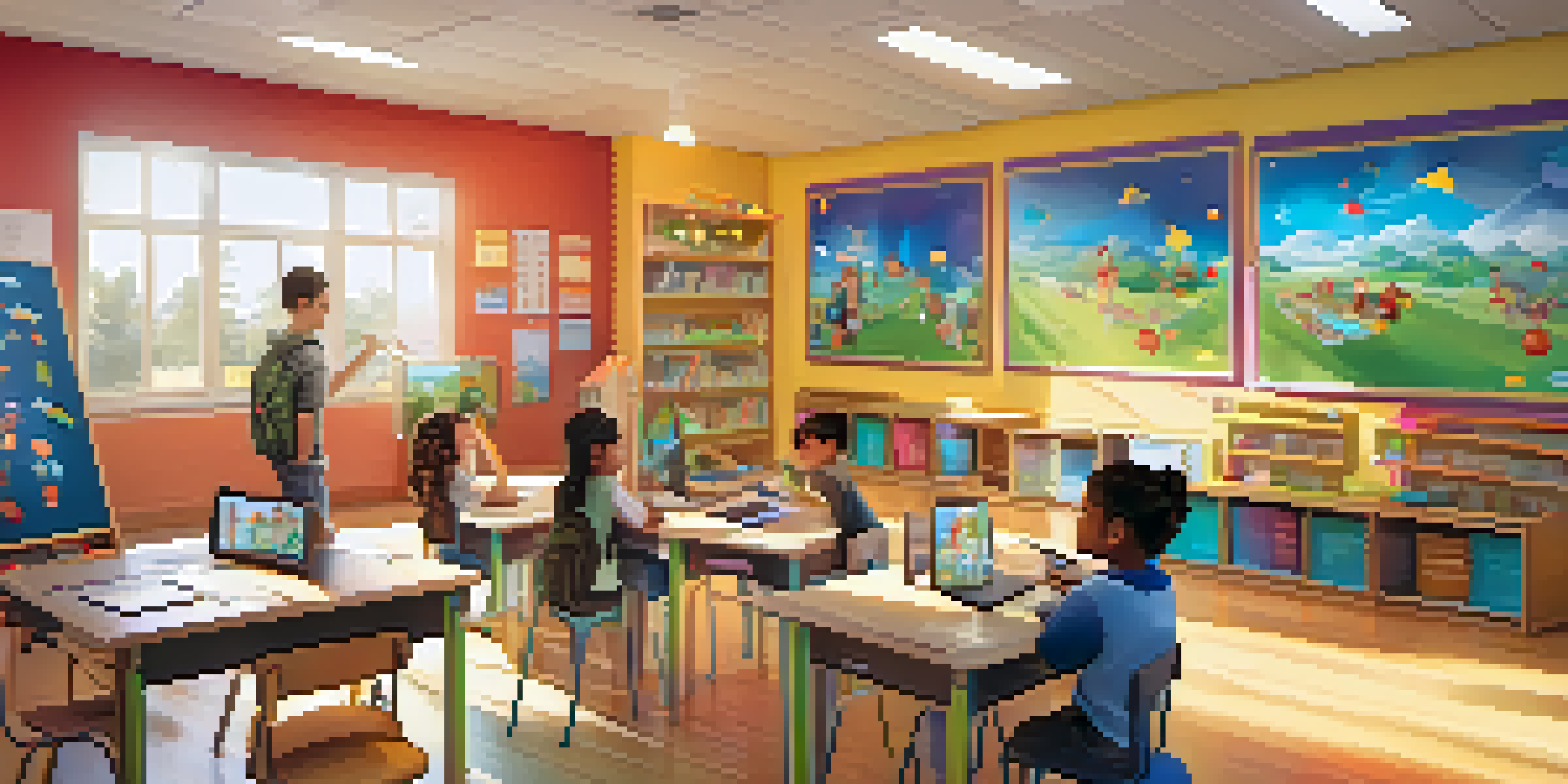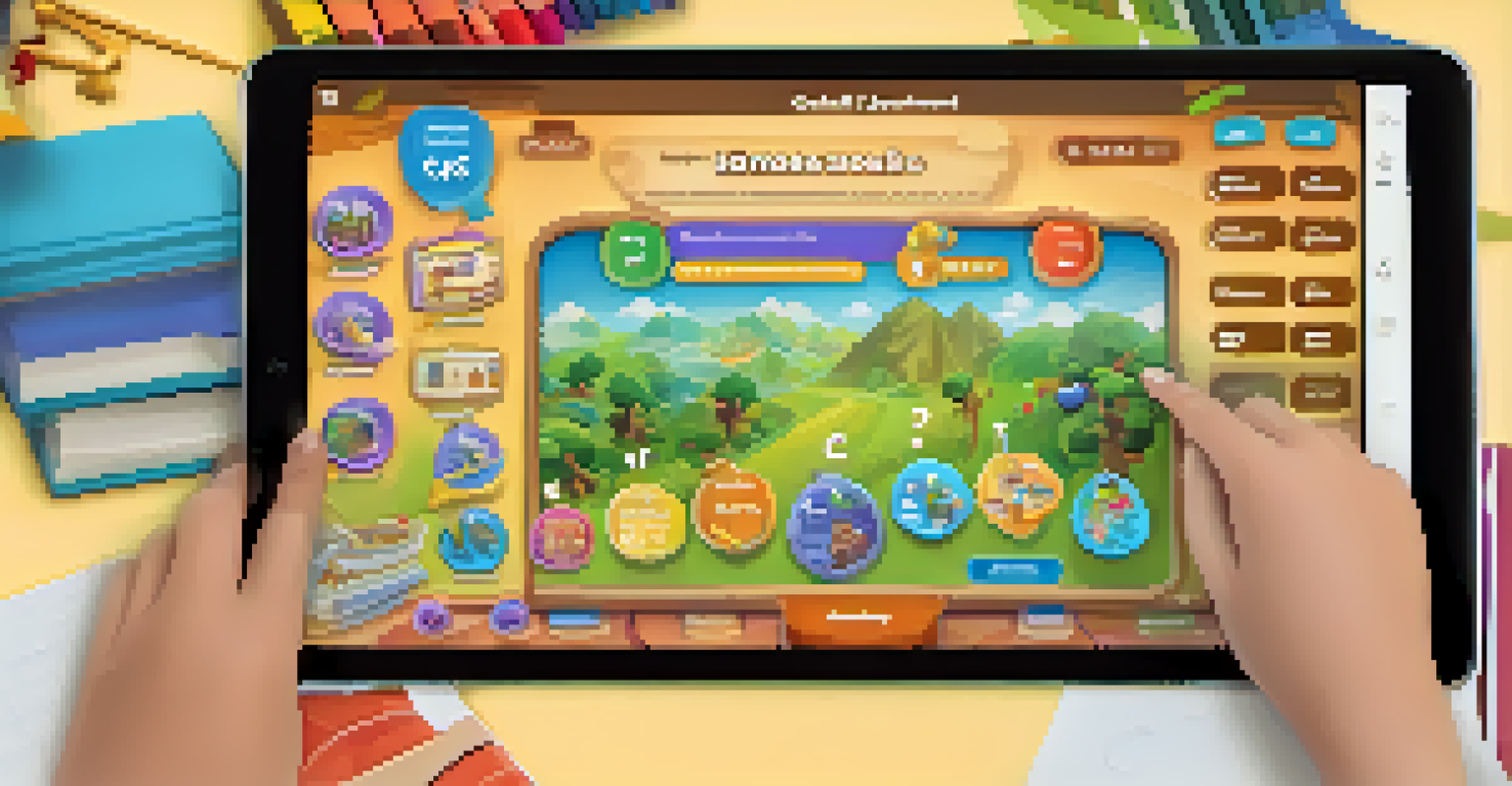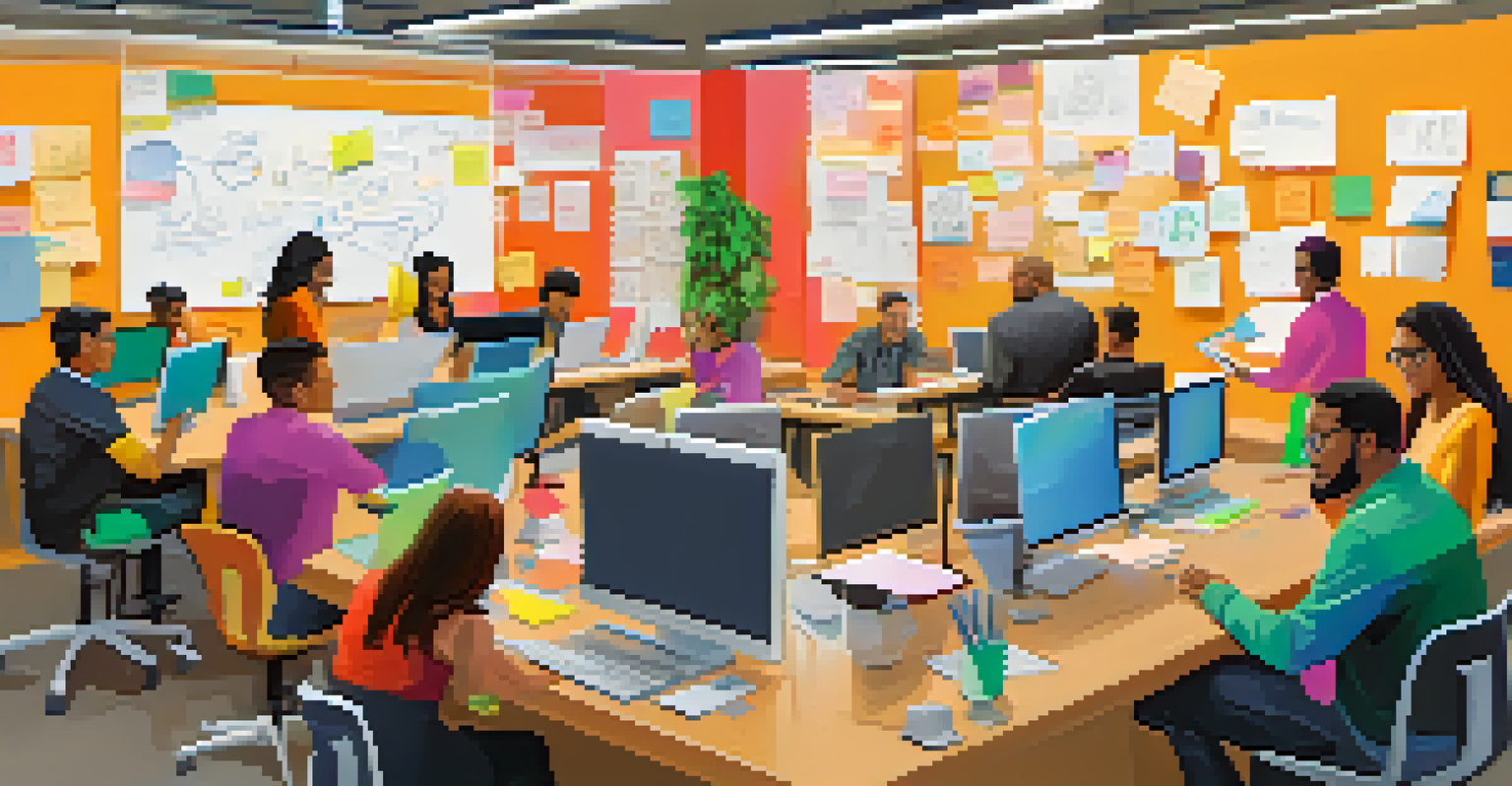The Future of AI in Gamified Education: Opportunities and Challenges

Understanding Gamified Education and Its Appeal
Gamified education combines elements of game design with learning to boost engagement. Think of it as turning a classroom into an interactive playground, where students earn points, badges, or levels for completing tasks. This approach taps into our natural love for games, making learning feel less like a chore and more like an adventure.
Games are the most elevated form of investigation.
When students are actively engaged, they are more likely to retain information and develop critical thinking skills. For example, a history lesson that uses role-playing games allows students to immerse themselves in the past, fostering a deeper understanding of historical events. This kind of active participation can lead to improved educational outcomes.
However, gamification isn’t just about fun; it's also about enhancing motivation and curiosity. By incorporating competition and rewards, educators can inspire students to push their limits and explore subjects in ways they might not have considered otherwise.
The Role of AI in Enhancing Gamified Learning
Artificial Intelligence (AI) can significantly enhance gamified education by personalizing the learning experience. AI algorithms can analyze a student's performance and adapt the difficulty level of challenges to match their abilities, ensuring that everyone is appropriately challenged. Imagine a game that adjusts its quests based on your skills — that's the power of AI in education.

Furthermore, AI can provide real-time feedback, allowing students to learn from their mistakes immediately. Instead of waiting for a teacher's review, students can see how their decisions affect outcomes, promoting a growth mindset. This instant feedback loop can keep learners engaged and motivated to improve.
Gamified Learning Boosts Engagement
Integrating game elements into education makes learning more interactive and enjoyable, enhancing student engagement and retention.
Additionally, AI can help educators identify areas where students struggle, enabling targeted interventions. By understanding common pain points, teachers can tailor their instruction to meet the diverse needs of their classroom, ultimately leading to more effective learning outcomes.
Opportunities for Personalized Learning Experiences
One of the most exciting prospects of AI in gamified education is the potential for personalized learning paths. Every student has unique learning styles, and AI can help create customized journeys that cater to individual needs. Picture a game where you can choose your character's traits based on how you learn best — whether that's visual, auditory, or kinesthetic.
The best way to predict the future is to create it.
This level of personalization can lead to higher engagement levels since students are more likely to invest time in learning that resonates with them. For instance, a student who struggles with math could engage with game-based scenarios that reinforce concepts through practical application rather than rote memorization.
Moreover, personalized experiences can foster a sense of ownership and responsibility among learners. When students feel that their learning is tailored to them, they become more motivated to take charge of their education, leading to better academic performance and self-confidence.
Challenges of Integrating AI in Gamified Education
Despite its potential, integrating AI into gamified education isn't without challenges. One major hurdle is the cost and complexity of implementing AI technologies in classrooms. Schools may need to invest in training, software, and hardware to successfully adopt these innovations, which can be a significant barrier, especially for underfunded institutions.
Another concern is the data privacy and ethical implications of using AI in education. Collecting and analyzing student data raises questions about how that information is stored and used. Parents and educators must ensure that any AI tools used in classrooms comply with privacy regulations and prioritize student safety.
AI Personalizes Learning Experiences
Artificial Intelligence customizes educational challenges to match individual student abilities, promoting a personalized learning journey.
Finally, there's the risk of over-reliance on technology. While gamification and AI can enhance learning, they shouldn't replace the essential human element of teaching. Educators must strike a balance, ensuring that technology serves as a tool rather than a substitute for meaningful teacher-student interactions.
The Future of AI-Driven Gamified Learning Environments
Looking ahead, AI-driven gamified learning environments are poised to revolutionize education. As technology continues to evolve, we can expect even more sophisticated tools that adapt to each learner's needs and preferences. Imagine virtual reality classrooms where students can explore historical events or complex scientific concepts in immersive ways.
Moreover, as AI becomes more integrated into everyday life, students will benefit from learning skills that are relevant to the future job market. Gamified education can incorporate real-world challenges, encouraging critical thinking and problem-solving skills that will serve students well in their careers.
In essence, the future of AI in gamified education holds immense promise. By continuously innovating and adapting to the needs of learners, we can create dynamic, engaging environments that prepare students for success in an ever-changing world.
The Importance of Collaboration Between Educators and Developers
For AI and gamified education to thrive, collaboration between educators and tech developers is crucial. Teachers bring invaluable insights about classroom dynamics and learning needs, while developers possess the technical expertise to create effective tools. Together, they can create solutions that are both innovative and practical.
This collaboration can lead to the development of AI tools that truly resonate with students. By involving educators in the design process, developers can ensure that their products address real challenges faced in the classroom. For instance, a game designed to teach coding could incorporate feedback from teachers about common misconceptions students have.
Collaboration Enhances Educational Tools
Strong partnerships between educators and developers can lead to the creation of effective AI tools that address real classroom challenges.
Ultimately, fostering strong partnerships between educators and developers can lead to more successful implementation of AI in gamified education. When both parties work together, the result is a more effective learning experience that benefits students and educators alike.
Final Thoughts: Embracing AI in Gamified Education
As we stand on the brink of a new era in education, embracing AI within gamified learning presents both exciting opportunities and significant challenges. The potential for personalized learning, enhanced engagement, and improved outcomes is immense, but it requires careful consideration of ethical and practical implications.
Educators, students, and developers must work hand-in-hand to ensure that AI technologies are integrated thoughtfully and responsibly. By doing so, we can create learning environments that inspire curiosity, creativity, and a lifelong love for learning.

In conclusion, as we explore the future of AI in gamified education, it's essential to remain open-minded and adaptable. The journey ahead is filled with possibilities, and by embracing innovation, we can pave the way for a brighter educational future.